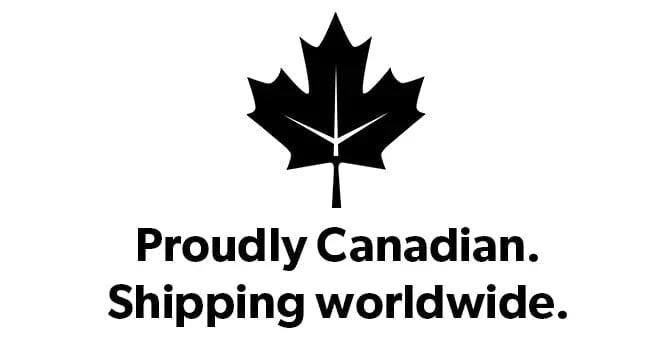Vaughn Ventus SLR3 Pro Carbon Senior Goalie Leg Pads - USED 35+1"
- 0 left in stock
Free Shipping Over $200

Fast Easy Returns

Best Price Promise
Intro & New Features
The Vaughn Ventus SLR3 Pro Carbon Senior Goalie Leg Pads are a solid step up from the SLR2. Vaughn took feedback from multiple NHL and NCAA goalies to make their most advanced pads yet. Further optimized for the changing game, the SLR3 Pro Carbon features a Pure Composite core, QuickSlide, an L-shape profile, and a tapered stiffness profile. This list barely scratches the surface—Vaughn really went above and beyond to enhance their SLR2 to fit all goalies of all sizes, with even more custom options available for those who prefer different tech. These pads are ideal for butterfly and hybrid goalies.
External Material
The pads are made of jenpro material on the outside and have more of an L-shape profile compared to the SLR2, which was more S-shaped. Vaughn reintroduced their highly favoured QuickSlide along the inner surface of their pads for this iteration. QuickSlide is renowned among many high-level goalies as having some of the fastest slide in the game.
Internal Construction
Vaughn added a Pure Composite core, and when combined with carbon fibre layering, it gives the pads a firmer perimeter and unparalleled pop on the rebounds. The stiffness has been redistributed to accommodate taller goalies who may have had some blocking challenges with the softer SLR2. At retail, the SLR3 is constructed to be stiffer at the top above the knee roll and more flexible near the boot.
Pad Break
The pads are pre-curved and solid on and along the outside with no break. The boot break is softer for added mobility and speed in that area. The pre-shaped upper portion helps increase seal against five-hole shots. Vaughn readjusted the vertical outer rolls to have a more triangular shape, making the pads more weight-efficient while improving rebound control. The pads have no knee rolls, reminiscent of other stiff butterfly pads.
Boot Angle & Toe Taper
The SLR3 sticks to a 60° boot angle and 90° toe taper, same as the SLR2. These specs give increased seal on the ice and add to overall coverage. The boot on the pads has been modified to have more flex than the SLR2 to balance out the added stiffness on the top. That combined with the 60° boot angle ensures mobility without sacrificing seal.
Knee Cradle
One of the biggest upgrades to the Ventus SLR3 is in the knee and shin section. This is the area where you will find the Pure Composite core, which as previously mentioned, adds pop to the rebounds and makes it easier and more efficient in deflecting them out toward the boards. The knee cradle itself is open for good pad rotation, a solid feature for butterfly goalies. The leg cradle is wide for good support during the butterfly as well.
Strapping
The SLR3 continues to use bungee toe ties and Vaughn’s Reactive Rotation Control strap, the latter of which is held together by a magnetic buckle. The Reactive Rotation Control strap enhances freedom of movement and, as the name implies, rotation speed.
Intro & New Features
The Vaughn Ventus SLR3 Pro Carbon Senior Goalie Leg Pads are a solid step up from the SLR2. Vaughn took feedback from multiple NHL and NCAA goalies to make their most advanced pads yet. Further optimized for the changing game, the SLR3 Pro Carbon features a Pure Composite core, QuickSlide, an L-shape profile, and a tapered stiffness profile. This list barely scratches the surface—Vaughn really went above and beyond to enhance their SLR2 to fit all goalies of all sizes, with even more custom options available for those who prefer different tech. These pads are ideal for butterfly and hybrid goalies.
External Material
The pads are made of jenpro material on the outside and have more of an L-shape profile compared to the SLR2, which was more S-shaped. Vaughn reintroduced their highly favoured QuickSlide along the inner surface of their pads for this iteration. QuickSlide is renowned among many high-level goalies as having some of the fastest slide in the game.
Internal Construction
Vaughn added a Pure Composite core, and when combined with carbon fibre layering, it gives the pads a firmer perimeter and unparalleled pop on the rebounds. The stiffness has been redistributed to accommodate taller goalies who may have had some blocking challenges with the softer SLR2. At retail, the SLR3 is constructed to be stiffer at the top above the knee roll and more flexible near the boot.
Pad Break
The pads are pre-curved and solid on and along the outside with no break. The boot break is softer for added mobility and speed in that area. The pre-shaped upper portion helps increase seal against five-hole shots. Vaughn readjusted the vertical outer rolls to have a more triangular shape, making the pads more weight-efficient while improving rebound control. The pads have no knee rolls, reminiscent of other stiff butterfly pads.
Boot Angle & Toe Taper
The SLR3 sticks to a 60° boot angle and 90° toe taper, same as the SLR2. These specs give increased seal on the ice and add to overall coverage. The boot on the pads has been modified to have more flex than the SLR2 to balance out the added stiffness on the top. That combined with the 60° boot angle ensures mobility without sacrificing seal.
Knee Cradle
One of the biggest upgrades to the Ventus SLR3 is in the knee and shin section. This is the area where you will find the Pure Composite core, which as previously mentioned, adds pop to the rebounds and makes it easier and more efficient in deflecting them out toward the boards. The knee cradle itself is open for good pad rotation, a solid feature for butterfly goalies. The leg cradle is wide for good support during the butterfly as well.
Strapping
The SLR3 continues to use bungee toe ties and Vaughn’s Reactive Rotation Control strap, the latter of which is held together by a magnetic buckle. The Reactive Rotation Control strap enhances freedom of movement and, as the name implies, rotation speed.
| Vaughn Ventus Senior Leg Pad Sizing Chart | ||
|---|---|---|
| Leg Pad Size | Floor-to-Knee Measurement | |
| 31” | 18.5" - 19.5" | 47.2 cm - 49.7 cm |
| 32” | 19.5 – 20.5" | 49.7 – 52.3 cm |
| 33” | 20.5 – 21.5" | 52.3 – 54.8 cm |
| 34” | 21.5 – 22.5" | 54.8 – 57.4 cm |
| 35” | 22.5 – 23.5" | 57.4 – 60.0 cm |
| 36” | 23.5 – 24.5" | 60.0 – 62.2 cm |
Goalie Leg Pads Sizing
Deciding your Goalie Pads size is crucial for having total control while moving in the crease. Sizing your pads properly is the difference between getting that perfect seal on your butterfly, and feeling clunky or unprotected in the net. Below we have compiled some information to better assist you in deciding which size is right for you.
Floor-To-Knee Measurement
Your Floor-To-Knee measurement will give you a good indication as to what "Pad Size" you will need. This measurement can be matched up with the provided sizing chart above.
How to Measure your Floor-To-Knee
- 1. In your bare feet, place the soft measuring tape at the inside of the bottom of your foot.
2. Slightly bend your knee.
3. Run the soft measuring tape up your shin, to the middle of your knee.
4. Match your Floor-To-Knee measurement with the provided sizing chart
What to look for when trying on your new pads.
Once you have your new leg pads, you’ll need to make sure they fit you properly. To do so, you’ll need to put the pads on with your skates. There a couple things to do to check size, once you have the pads on:
1. Stand straight and bring your feet together. This will show you the overall height of the pad, while on. Your pads should not be taller than your hips. Ideally you want the top of your pad at the half-way point of your thighs. A pad fitted for a young growing goaltender can be a little taller, so a little above the half-way point is normal.
2. Next you want to get in your stance, keep your hands in a ready position, and drop to your butterfly. Without moving your legs to correct your butterfly, bring your heels together. This is where you assess your knee position. For a proper fit, you want the middle of your knee to sit directly on the center of the knee stack. If you’re looking for growing room, you want the middle of your knee to land roughly 1.5” below the center of the knee stack (1” for JR).
Not getting a complete seal while in your butterfly?
If you're having trouble getting a full seal in your new pads, it may be the way you’re strapping them up. Make sure your boot strap and top straps (above knee) are loosened up a bit. The reason you want these straps loose is because they have a direct effect on the rotation of the pad. Having a loose boot strap makes it easy for your foot and ankle to rotate as the pad moves. Same goes for the top straps, as you don't want them pulling down too hard on the thigh rise.








